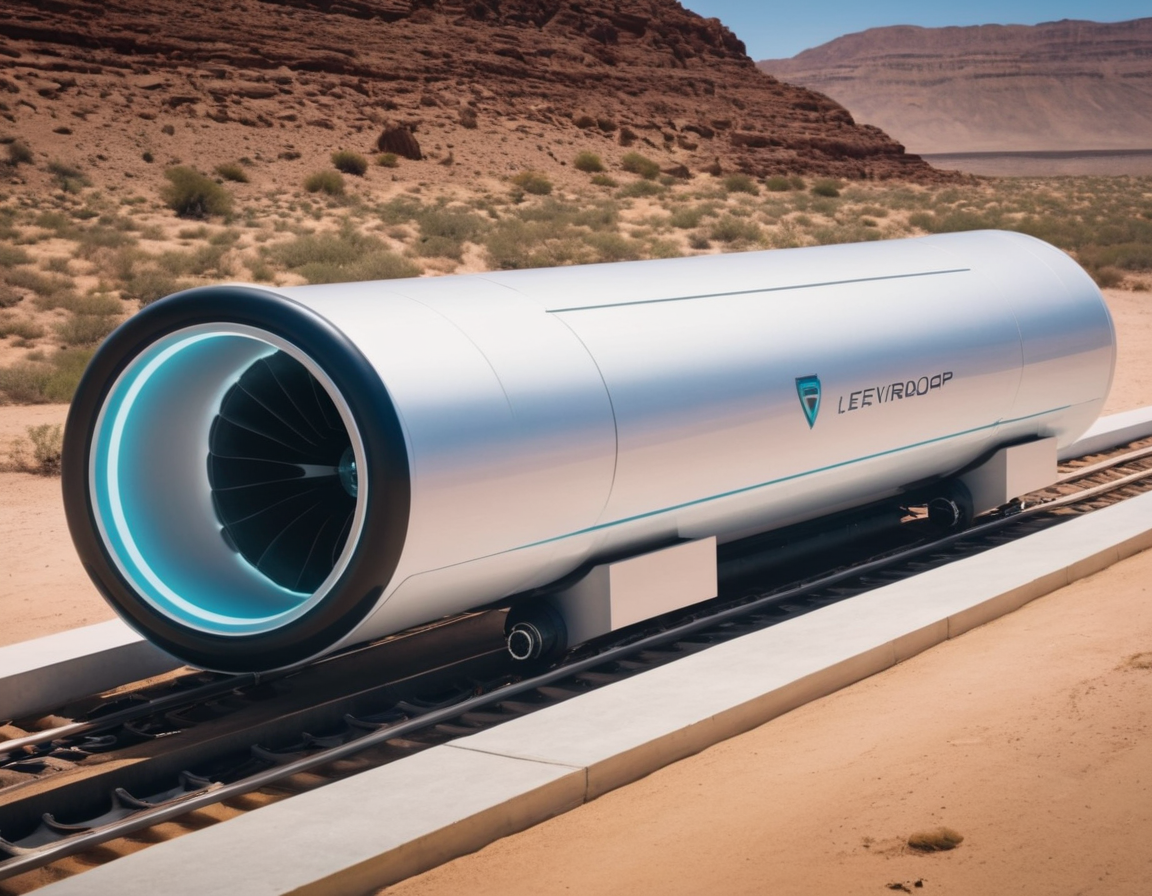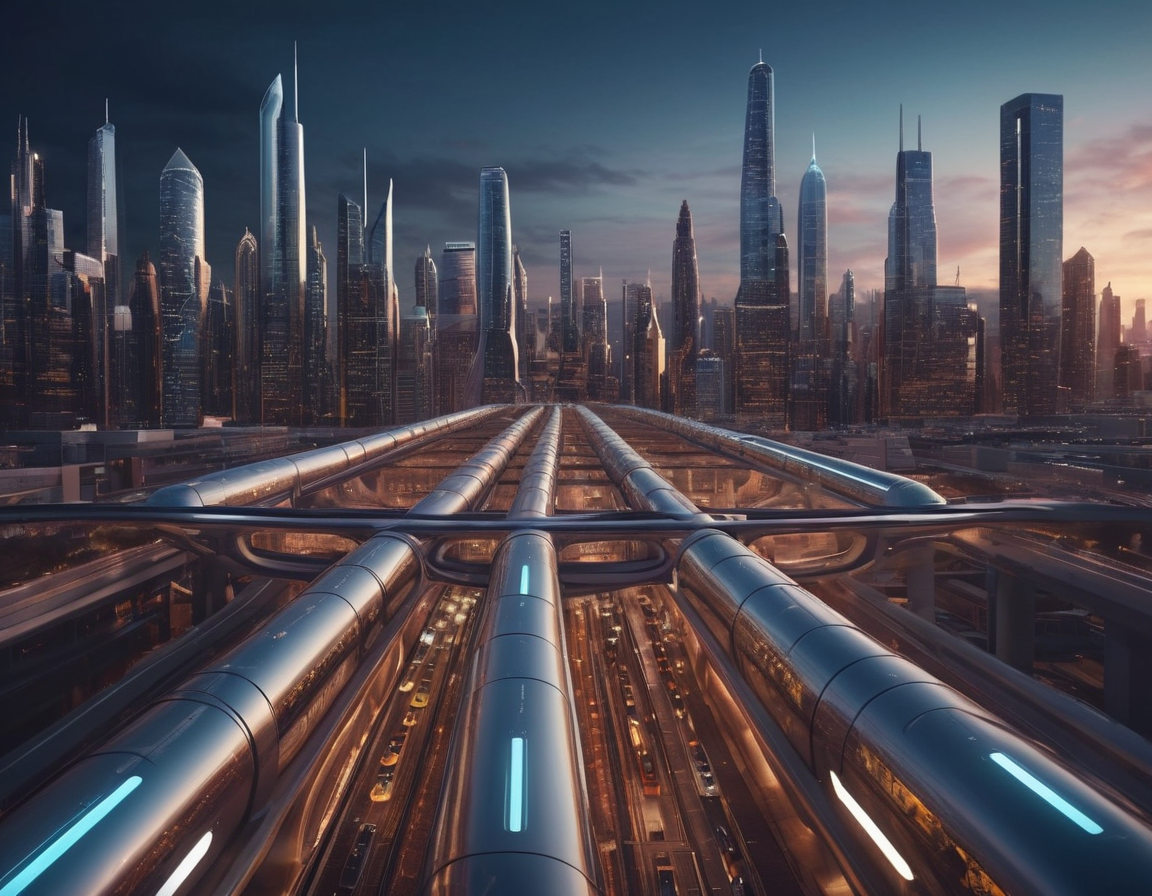The Future of Urban Transit: Exploring the Hyperloop System
Revolutionizing Travel: The Hyperloop System Unveiled
Imagine gliding across the country in a capsule floating inside a low-pressure tube at airline speeds but on the ground. This futuristic concept, known as the Hyperloop, promises to revolutionize how we think about long-distance travel. Let’s embark on a journey to understand the ins and outs of this groundbreaking system that could transform our urban transit experiences.
What is Hyperloop?
 The Hyperloop concept, initially proposed by Elon Musk in 2013, is a high-speed transportation system in which passenger pods travel through a tube either on a cushion of air or using magnetic levitation. Its key selling points are speed, efficiency, and the promise of being environmentally friendly. Supporters of the technology believe that it can achieve speeds up to 760 miles per hour, dramatically reducing travel times between major cities.
The Hyperloop concept, initially proposed by Elon Musk in 2013, is a high-speed transportation system in which passenger pods travel through a tube either on a cushion of air or using magnetic levitation. Its key selling points are speed, efficiency, and the promise of being environmentally friendly. Supporters of the technology believe that it can achieve speeds up to 760 miles per hour, dramatically reducing travel times between major cities.
The Technology Behind Hyperloop
 Key to Hyperloop’s anticipated success is the combination of reduced air resistance in a tube under partial vacuum and frictionless propulsion using magnetic acceleration. This section will delve into the electromagnetic systems that enable the pods to levitate and glide at unprecedented speeds, principles of vacuum engineering critical for maintaining the tube environment, and the innovations that make Hyperloop a potential game-changer in transportation technology.
Key to Hyperloop’s anticipated success is the combination of reduced air resistance in a tube under partial vacuum and frictionless propulsion using magnetic acceleration. This section will delve into the electromagnetic systems that enable the pods to levitate and glide at unprecedented speeds, principles of vacuum engineering critical for maintaining the tube environment, and the innovations that make Hyperloop a potential game-changer in transportation technology.
The Global Hyperloop Race
Hyperloop systems are not just theoretical; they’re becoming a competitive field with numerous companies and countries vying to be the first to bring this technology to the public. This section highlights the major players in the Hyperloop race, including Virgin Hyperloop One, Hyperloop Transportation Technologies, and countries that are investing heavily in this mode of transit, such as the UAE and the USA.
Challenges and Criticisms
Despite the exciting possibilities, the Hyperloop faces considerable challenges including technological hurdles, regulatory approvals, and the enormous costs involved in constructing the infrastructure. Critics also point to potential safety concerns and the unforeseen consequences of such high-speed travel on the human body.
The Impact on Society and Infrastructure
 The Hyperloop system has the potential to reshape societies and economies by enabling suburban areas to connect with urban centers more efficiently, possibly leading to major changes in urban development and commuting patterns. This change could lead to ‘polycentric cities’, where multiple urban areas are interconnected, enabling more flexible living and working arrangements.
The Hyperloop system has the potential to reshape societies and economies by enabling suburban areas to connect with urban centers more efficiently, possibly leading to major changes in urban development and commuting patterns. This change could lead to ‘polycentric cities’, where multiple urban areas are interconnected, enabling more flexible living and working arrangements.
Envisioning the Future of Travel
This conclusive section paints a picture of how the deployment of Hyperloop systems could alter the landscape of travel and human interaction. It’s a vision of cities interconnected by tubes, where geographical distances become less significant, and the notion of living in one city and working in another, potentially hundreds of miles away, becomes a daily reality.
Join the discussion on whether the Hyperloop will become the fifth mode of transport and how it might reshape the future of urban transit. Share your thoughts and stay tuned for more developments in this exciting area.






